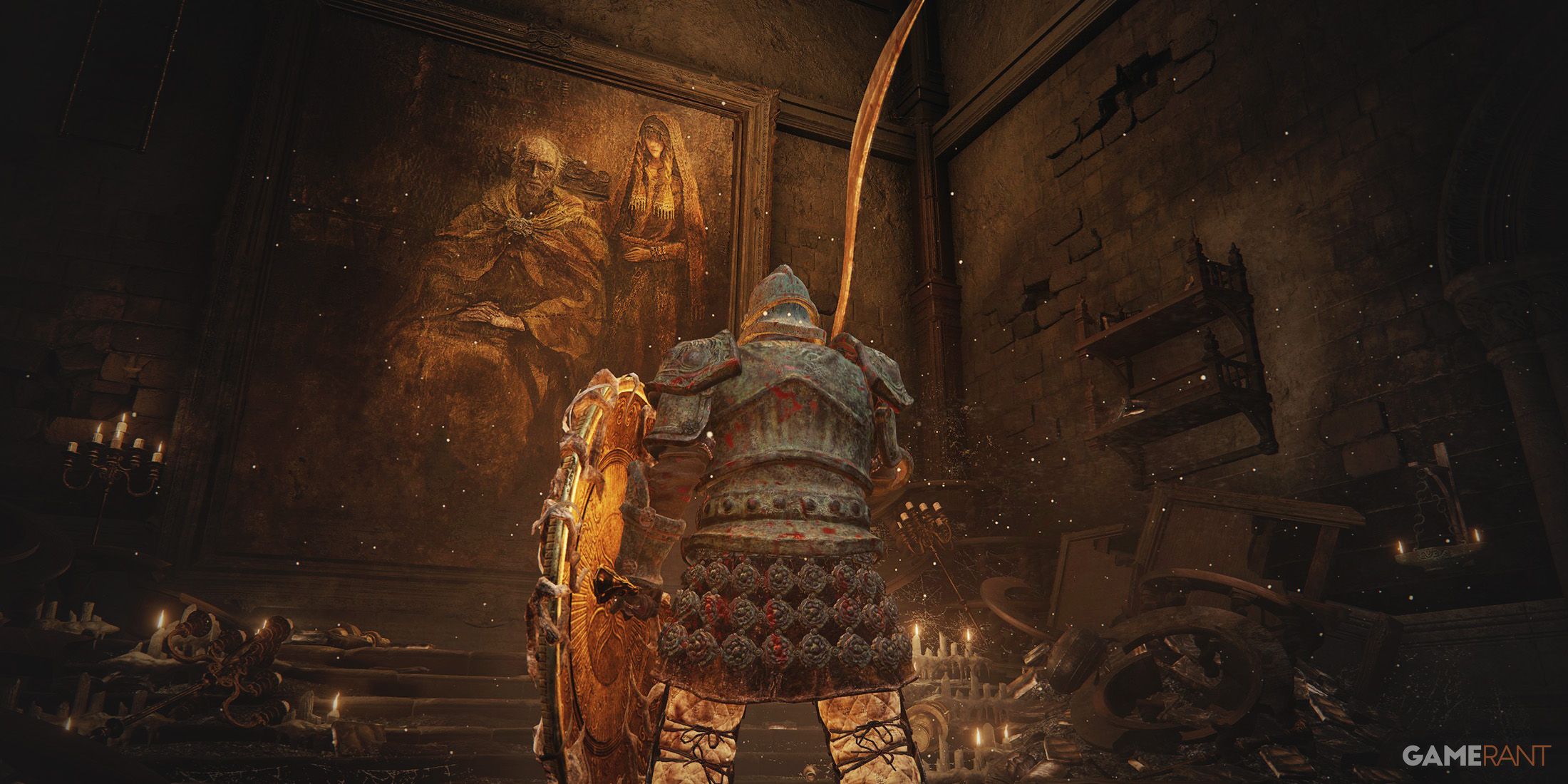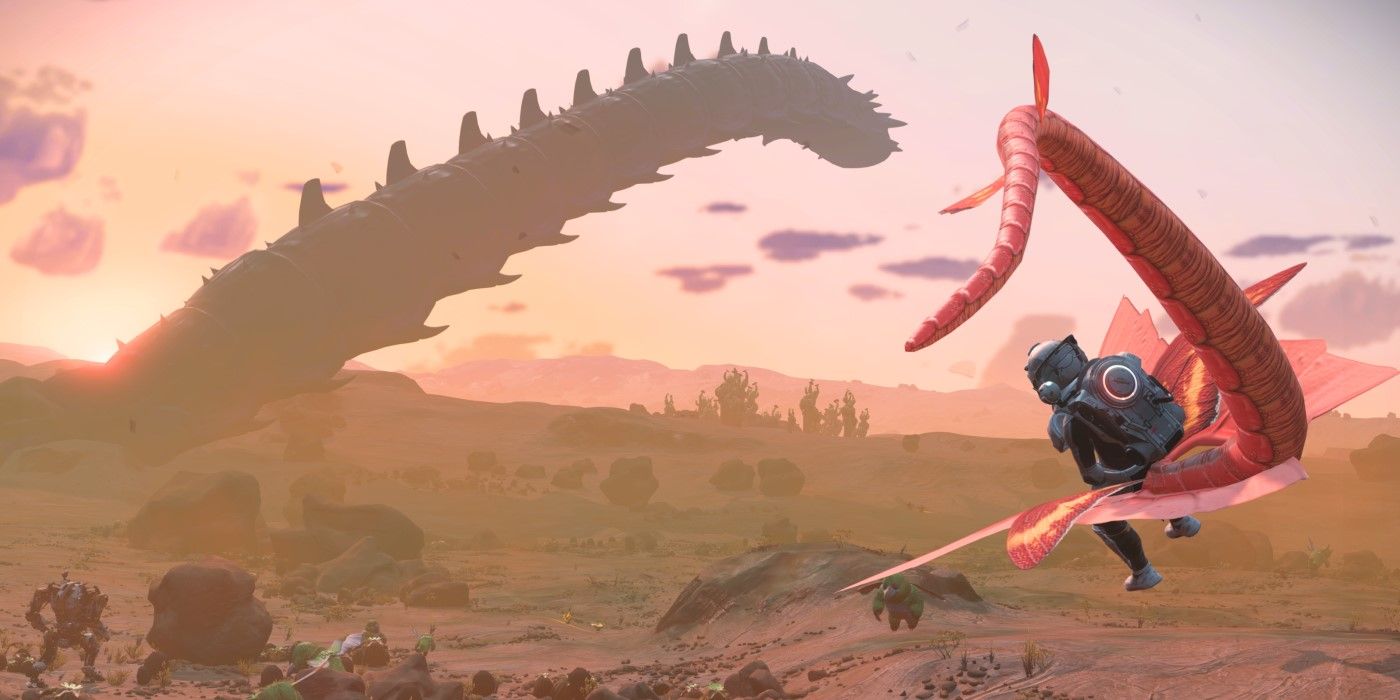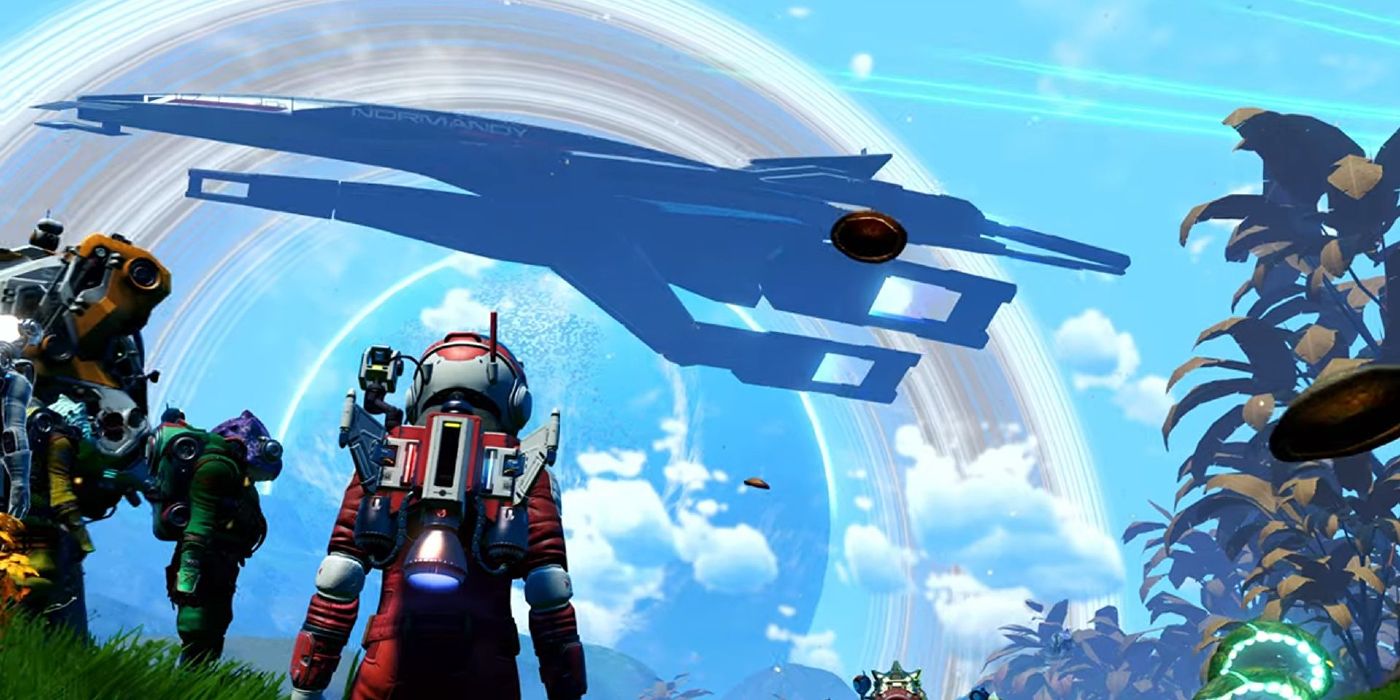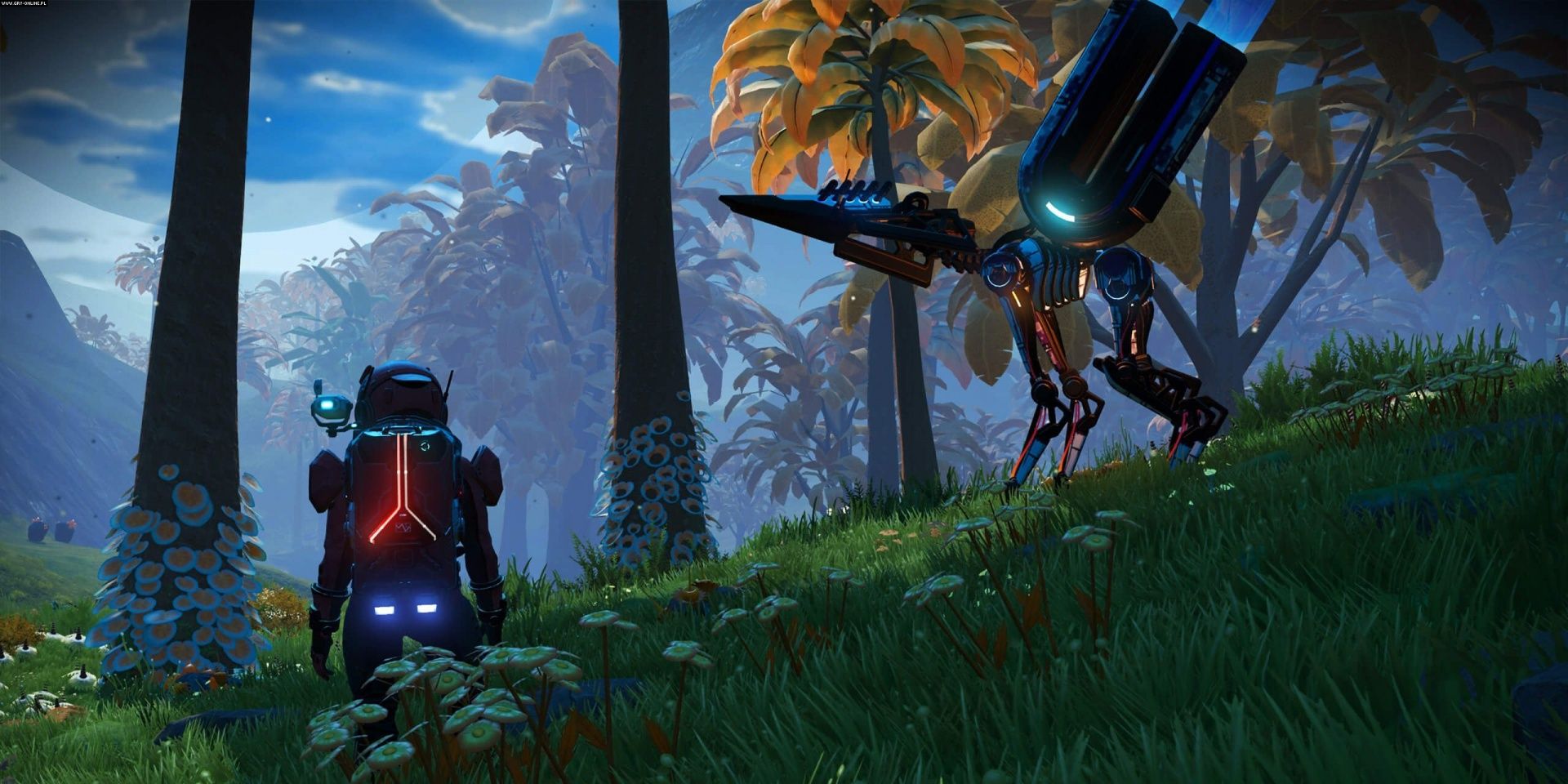It's been almost five years now since the original release of No Man's Sky, the interplanetary survival title from Hello Games. Despite a rocky launch, the game has really improved over the last few years. This is due to the steady series of updates that Hello Games has released. The latest of these updates is Prisms, also known as No Man's Sky 3.5.
The new update for No Man's Sky focuses on graphical improvements, with a wide array of visual enhancements. As well as these optimizations, the update also comes with a few gameplay additions, and a pair of new Expeditions.
Improvements on No Man's Sky's Planets
A lot of the graphical improvements in No Man's Sky Prism are focused on planetary exploration. All planetary surfaces have been made more visually rich, with a greater density of plants and terrain features. Weather systems have also been improved, with rain now having a refraction effect.
In gameplay terms, hazardous weather events such as meteors and lightning strikes can now spawn valuable loot. This gives players more of an incentive to explore inhospitable worlds. The Prisms update's new features aren't limited to the surfaces of planets either, as players will also able to explore new and improved cave systems. These new subterranean biomes will have increased numbers of fungal and floral growths, and benefit from Prisms' atmospheric lighting improvements.
Lighting and Star Improvements in No Man's Sky
No Man's Sky Prisms brings a lot of new graphical features to the space survival game, most of which are focused around lighting. The new atmospheric lighting system adds depth to light effects both on planets and in space. Light rays have also been improved, along with refractions from glass, forcefields, and alien bubbles. These graphical additions are bundled alongside Nvidia's DLSS technology, allowing players with compatible graphics cards to significantly boost framerates.
The torch carried by No Man's Sky players has also been improved, providing a more realistic light when activated. These improvements combine with new Screen Space Reflections to provide brighter, more realistic-looking hangars, hallways, and stations. Parallax Occlusion mapping technology has also been added in the new update, adding a sense of depth to many textures that used to appear flat.
While these visual effects are most strongly seen on planets, there have been improvements to the graphics in space-flight as well. A new Interstellar Travel effect system provides a more visually-impressive jump to warp, combined with new audio. Finally, the stars of No Man's Sky have received a major update, adding to both space-flight backdrops and the night sky on planets. More stars, more variety, and higher quality really help to remind players of the vastness of space.
Creature Comforts in No Man's Sky Prisms
The Prisms update also makes a few quality-of-life changes to No Man's Sky. Almost all creatures can now be tamed, and flying creatures have been made rideable. In addition, new fur details add a greater amount of variety to the many species of each planet.
The No Man's Sky UI will now show when new items have been added to the inventory, display multiple new blueprints at the same time, and use improved planetary charts. A Synthesis Laboratory has been added to the blueprint research area of the Space Anomaly. This new research table will provide recipes for crafting components at the cost of nanites.
No Man's Sky's Bytebeat device has also been improved with a new drum synthesizer and library. The Bytebeat library allows players to save custom soundtracks and share them with other players. With these changes and many others, Prisms has given No Man's Sky a real glow-up in advance of its five-year anniversary.
No Man's Sky is available now on PC, PlayStation 4, PlayStation 5, Xbox One, and Xbox Series X.







